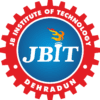Computer Science & Engineering
JBIT college of Pharmacy established in the lap of Himlayan region of India offered Bachelor of Pharmacy (B. Pharma.) and Diploma in Pharmacy (D. Pharma.) courses. Both the courses are approved by AICTE and PCI.
Bachelor of Pharmacy (B. Pharma.) is a four year program aimed to provide services to promote health, mainly focusing on synthesis, formulating, safety and efficacy of a drug. This program is the journey to know the utility of a chemical to become a drug and life saving medicine. Diploman in Pharmacy (D. Pharma.) is a two years program affiliated by Uttarakhand Board of Technical Education, Roorkee.
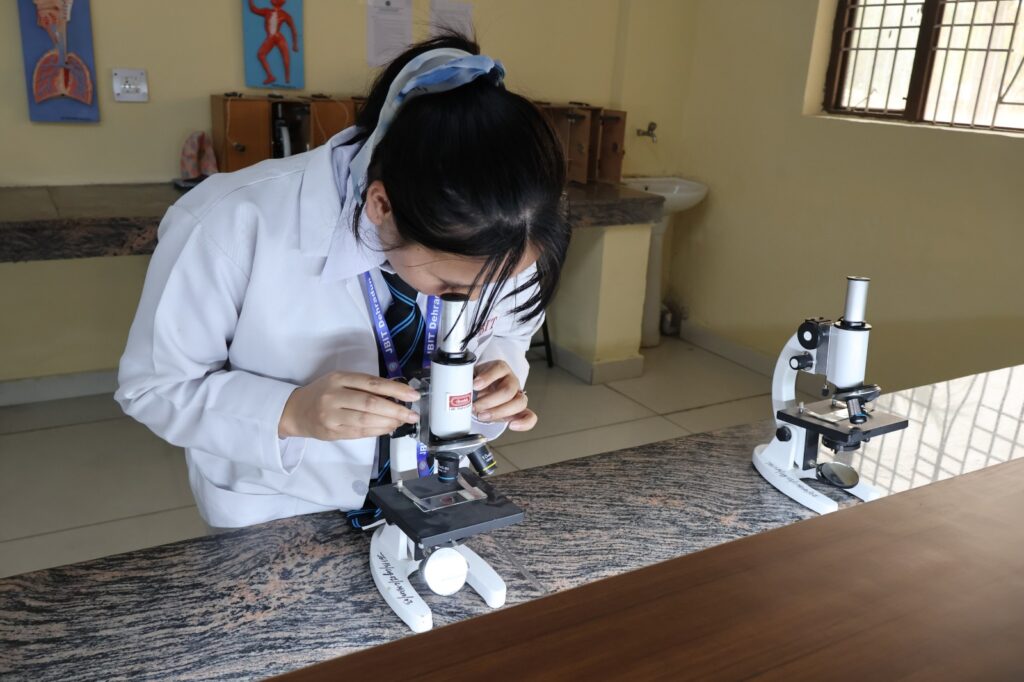
VISION
To be pioneer educational group producing knowledge, skills and social sensitivity scholar.
MISSION
- To groom the students with the quality of technical skill, who will be able to create, share and apply their knowledge in multidisciplinary areas for the benefit of society.
- To expertise the students in advanced technology thereby promoting research.
- To pursue excellence in Industry Institute Interaction program for students to get acquainted with corporate culture.
- To impart moral, ethical values and interpersonal skills to the students.
I am delighted to welcome you to JBIT College of Pharmacy, Dehradun, a premier institution committed to excellence in pharmaceutical education. As the Principal, I take immense pride in sharing with you the outstanding education we provide in the field of Pharmacy, particularly in our D.Pharm and B.Pharm programs.
Our college is dedicated to nurturing the next generation of pharmacy professionals who will contribute significantly to healthcare and pharmaceutical sciences. Our programs are meticulously designed to offer a blend of theoretical knowledge and practical skills, ensuring that our students are well-prepared for the dynamic and ever-evolving pharmaceutical industry.
Dr. Arun Kumar Maurya, M.Pharm, PhD
Principal, JBIT College of Pharmacy
Dehradun.
CSE Syllabus
CSE Syllabus
| Sl. No. | NAME | FILE |
|---|---|---|
| SYLLABUS 2022 | ||
| 1 | B.Tech First Year | View. |
| 2 | B.Tech 2ND TO 4TH YEAR SPECILIZATION IN AI & ML | View. |
| 3 | B.Tech 2ND TO 4TH YEAR SPECILIZATION IN ANDROID | View. |
| 4 | B.Tech 2ND TO 4TH YEAR SPECILIZATION IN AR & VR | View. |
| 5 | B.Tech 2ND TO 4TH SPECILIZATION IN Cyber Security | View. |
| 6 | B.Tech 2ND TO 4TH SPECILIZATION IN DATA SCIENCE | View. |
| 7 | B.Tech 2ND TO 4TH YEAR SPECILIZATION IN ENERGY ENGINEERING | View. |
| 8 | B.Tech 2ND TO 4TH YEAR SPECILIZATION IN IOT | View. |
| 9 | B.Tech 2ND TO 4TH YEAR SPECILIZATION IN ROBOTICS ENGINEERING | View. |
| 10 | SYLLABUS 2020-21 | View. |
| 11 | SYLLABUS 2019-20 | View. |
| 12 | SYLLABUS 2018 | VIEW |
Program Specific Outcomes and Program Educational Objectives
























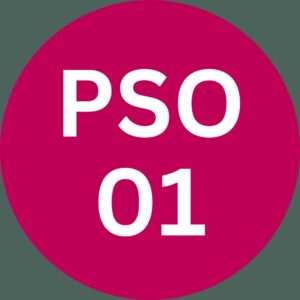

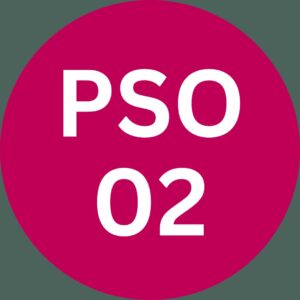

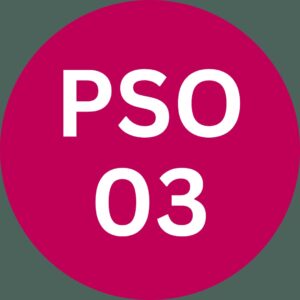





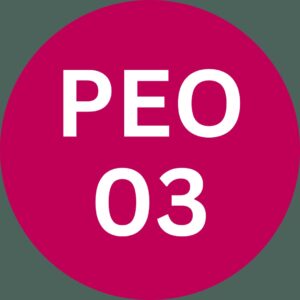

| S.NO | Subject Name | Subject Code | Course Outcome |
|---|---|---|---|
| 1 | B.Tech. -3rd Sem CSE Department | ||
| 2 | Computer Organization& Architecture | BCST-404 | CO1 Draw the functional block diagram of a single bus architecture of a computer and describe the function of the instruction execution cycle, RTL interpretation of instructions, addressing modes, instruction set. CO2 Write assembly language program for specified microprocessor for computing 16-bit multiplication, division and I/O device interface (ADC, Control circuit, serial port communication). CO3 Write a flowchart for Concurrent access to memory and cache coherency in Parallel Processors and describe the process. CO4 Given a CPU organization and instruction, design a memory Unit and analyse its operation by interfacing with the CPU. CO5 Given a CPU organization, assess its performance, and apply design techniques to enhance performance using pipelining, parallelism and RISC methodology. CO6 Analyze the memory access operations and memory architecture. |
| 3 | Database Management System | BCST402 | CO1 For a given query explain relational algebra expressions for that query and optimize the developed expressions CO2 For a given specification of the requirement design the databases using ER method and normalization. CO3 For a given specification develop the SQL queries for Open source and Commercial DBMS -MYSQL, ORACLE, and DB2. CO4 For a given query optimize its execution using Query optimization algorithms CO5 For a given transaction-processing system, determine the transaction atomicity, consistency, isolation, and durability. CO6 Implement the isolation property, including locking, time stamping based on concurrency control and Serializability of scheduling |
| 4 | Unix And Shell Programming | TCS-402 | CO1 Understand the basic concepts of UNIX Architecture and basic Commands. CO2 Understand different types of Files, File system and basic file system commands. CO3 Understand the commands related to Shell basics, vi editor and regular expression commands. CO4 Understand the concepts of advance file concepts, commands related to Shell script and filter commands. CO5 Understand the concepts of process and commands related to Perl script. |
| 5 | Theory of Computation | TCS 403 | CO1 Apply knowledge in designing or enhancing compilers. CO2 Apply grammars and automata (recognizers) for different language classes. CO3 Apply knowledge in developing tools for language processing or text processing |
| 6 | Cyber Security | BCST-408 | CO1 Know about various attacks and viruses in cyber systems CO2 Know about how to prevent digital attacks CO3 Know about how to prevent Phishing Attacks CO4 Know about how to do secure transactions |
| 7 | Discrete Structures | BCST-302 | CO-1 Evaluate a given logic sentence express it in terms of predicates, quantifiers, and logical connectives CO-2 Illustrate a given a problem, derive the solution using deductive logic and prove the solution based on logical inference CO-3 Analyze a given a mathematical problem, classify its algebraic structure CO-4 Remember Boolean functions and simplify expressions using the properties of Boolean algebra CO-5 Develop the given problem as graph networks and solve with techniques of graph theory. |
| 8 | Data Structure | TCS-303 | CO1 Student will be able to understand the basic concepts of Data Structures. CO2 Student will be able to understand Procedures, Tools & Practices of Data Structures. CO3 Student will be able to understand latest trends of Tools & Practices of Data Structures. CO4 Student will be able to understand the Target & Prepare for the Test and report making integration. CO5 Student will perform EH with latest Tools, Practices & will be Blue Hat Hacker. |
| 9 | Object Oriented Programming and Methodology | TCS-304 | CO1 Explain the procedural and object oriented paradigm with concepts of streams, classes, functions, data and objects CO2 Show dynamic memory management techniques using pointers, constructors, destructors, etc CO3 Apply the concept of function overloading, operator overloading, virtual functions and polymorphism. CO4 Develop inheritance with the understanding of early and late binding, usage of exception handling, generic programming. CO5 Apply the use of various OOPs concepts with the help of programs |
| 10 | ARTIFICIAL INTELLIGENCE | TCS-603 | CO1 Acquire advanced Data Analysis skills. CO2 Stay Industry relevant and grow in your career. CO3 CreateAI/MLsolutionsforvariousbusinessproblems.ŸBuildanddeployproductiongradeAI/MLapplications. CO4 Apply AI/ML methods, techniques and tools immediately |
| 11 | Compiler Design | BCST-602 | CO-1 Understands compiler and various phases in compilation. CO-2 Understands Lexical Analysis and implement it using LEX tool. CO-3 Understands LL, LR, and SLR parsing techniques. CO-4 Implement parsing using YACC tool. CO-5 Understands Syntax Directed Translation, Symbol Tables and their applications. |
| 12 | Visual Programming& .NET Technologies | BCST 605 | CO1 Understanding the philosophy of .NET and its basic building blocks CO2 Applying C# Language Fundamentals to build build C# Applications using VS.NET IDE CO3 Applying Object Oriented Programming with C# in .NET CO4 Analyzing Interfaces and Collections in .NET CO5 Analyzing .Net Assembles |
| 13 | COMPUTER GRAPHICS | TCS – 501 | CO1 Apply metrics to measure the performance of various data mining algorithms. CO2 Explain the importance of data warehousing and OLAP technology CO3 Explain an understanding of data mining on various types of data like web data and spatial data. CO4 Apply appropriate data mining methods like classification, clustering or Frequent Pattern mining on various data sets. CO5 Explain the data needed for data mining using Pre-processing techniques |
| 14 | Computer Networks | TCS-502 | CO-1 Characterize and appreciate computer networks from the view point of components and from the view point of services. CO-2 Model a problem or situation in terms of layering concept and map it to the TCI/IP stack. CO-3 Display good understanding of the flow of a protocol in general and a network protocol. CO-4 Design a Reliable Data Transfer Protocol and develop solutions of Transport Layer. CO-5 Describe principles of Network Layers and use IP addressing to create subnets. |
| 15 | Design & Analysis of Algorithms | BCST-503 | CO-1 Student should able to distinguish which algorithm is time and space efficient asymptotically. CO-2 Student should be able to find the space and time efficient sorting and searching strategy. CO-3 Student should by able to analyze the different designed strategy of algorithm. CO-4 Student should be able to apply a designed strategy of algorithm to solve a particular problem. CO-5 Understanding of NP- Complete and randomized algorithm. |
| 16 | Modeling & Simulation | TCS-506 | CO-1 Demonstrate basic programming skills – functions, arrays, loops, conditional statements, procedures. CO-2 Demonstrate technical communication skills CO-3 Explain the Role of Modeling CO-4 Utilize the Modeling Process to identify the key parameters of a model, estimate model outcomes, utilize a computational tool, e.g., Matlab to implement the mathematical representation of the model, convey the results of the simulation accurately, validate the model with data, and discuss the quality and sources of errors in the model. CO-5 Construct difference-based computer models. CO-6 Complete a capstone modeling project that identifies a problem, develops a mathematical representation and transforms it to a computational model. Document the development and implementation of the model and present in oral and written form. |
| 17 | Visual Programming& .NET Technologies | BCST 605 | CO1 Understanding the philosophy of .NET and its basic building blocks CO2 Applying C# Language Fundamentals to build build C# Applications using VS.NET IDE CO3 Applying Object Oriented Programming with C# in .NET CO4 Analyzing Interfaces and Collections in .NET CO5 Analyzing .Net Assembles |
| 18 | OPERATING SYSTEM | TCS 601 | CO1 Understanding the philosophy of .NET and its basic building blocks CO2 Applying C# Language Fundamentals to build build C# Applications using VS.NET IDE CO3 Applying Object Oriented Programming with C# in .NET CO4 Analyzing Interfaces and Collections in .NET CO5 Analyzing .Net Assembles |
| 19 | Cryptography & Network Security | TCS 089 | CO1 Provide security of the data over the network. CO2 Do research in the emerging areas of cryptography and network security. CO3 Implement various networking protocols. CO4 Protect any network from the threats in the world. |
| 20 | ACN | TCS-803 | CO1 Acquire advanced Network Analysis skills. CO2 Stay Industry relevant and grow in your career. CO3 Create network solutions for various business problems. Build and deploy production grade network applications. CO4 Apply network methods, techniques and tools immediately |
| 21 | DISTRIBUTED COMPUTING | TCS-801 | |
| 22 | Computer Organization & Architecture | BCST-404 | CO1 Draw the functional block diagram of a single bus architecture of a computer and describe the function of the instruction execution cycle, RTL interpretation of instructions, addressing modes, instruction set. CO2 Write assembly language program for specified microprocessor for computing 16 bit multiplication, division and I/O device interface (ADC, Control circuit, serial port communication). CO3 Write a flowchart for Concurrent access to memory and cache coherency in Parallel Processors and describe the process. CO4 Given a CPU organization and instruction, design a memory Unit and analyze its operation by interfacing with the CPU. CO5 Given a CPU organization, assess its performance, and apply design techniques to enhance performance using pipelining, parallelism and RISC methodology. CO6 Analyze the memory access operations and memory architecture. |
| 23 | Database Management System | BCST402 | CO1 For a given query explain relational algebra expressions for that query and optimize the developed expressions CO2 For a given specification of the requirement design the databases using ER method and normalization. CO3 For a given specification develop the SQL queries for Open source and Commercial DBMS -MYSQL, ORACLE, and DB2. CO4 For a given query optimize its execution using Query optimization algorithms CO5 For a given transaction-processing system, determine the transaction atomicity, consistency, isolation, and durability. CO6 Implement the isolation property, including locking, time stamping based on concurrency control and Serializability of scheduling |
| 24 | Cyber Security | BCST-408 | CO1 Know about various attacks and viruses in cyber systems CO2 Know about how to prevent digital attacks CO3 Know about how to prevent Phishing Attacks CO4 Know about how to do secure transactions |
| 25 | Software Engineering | BCST-403 | CO1 Apply Software life cycle models and have a knowledge of different phases of Software life cycle CO2 Identify, formulate, review, estimate and schedule complex software projects using principles of mathematics. CO3 Demonstrate bug free software with good design and quality by using appropriate techniques and modern engineering and IT tools. CO4 Analyze verification, validation activities, static, dynamic testing, debugging tools and techniques and importance of working in teams. CO5 Apply Software life cycle models and have a knowledge of different phases of Software life cycle |
| 26 | Theory of Automata & Formal Languages | BCST405 | CO1 Apply knowledge in designing or enhancing compilers. CO2 Apply grammars and automata (recognizers) for different language classes. CO3 Apply knowledge in developing tools for language processing or text processing |
| 27 | Compiler Design | BCST-602 | CO-1 Understands compiler and various phases in compilation. CO-2 Understands Lexical Analysis and implement it using LEX tool. CO-3 Understands LL, LR, and SLR parsing techniques. CO-4 Implement parsing using YACC tool. CO-5 Understands Syntax Directed Translation, Symbol Tables and their applications. |
| 28 | GRAPH THEORY | TCS 604 | |
| 29 | ARTIFICIAL INTELLIGENCE | TCS-603 | CO1 Acquire advanced Data Analysis skills. CO2 Stay Industry relevant and grow in your career. CO3 CreateAI/MLsolutionsforvariousbusinessproblems.ŸBuildanddeployproductiongradeAI/MLapplications. CO4 Apply AI/ML methods, techniques and tools immediately |
| 30 | COMPUTER GRAPHICS | TCS – 501 | CO1 Apply metrics to measure the performance of various data mining algorithms. CO2 Explain the importance of data warehousing and OLAP technology CO3 Explain an understanding of data mining on various types of data like web data and spatial data. CO4 Apply appropriate data mining methods like classification, clustering or Frequent Pattern mining on various data sets. CO5 Explain the data needed for data mining using Pre-processing techniques |
| 31 | Design & Analysis of Algorithms | BCST-503 | CO-1 Student should able to distinguish which algorithm is time and space efficient asymptotically. CO-2 Student should be able to find the space and time efficient sorting and searching strategy. CO-3 Student should by able to analyze the different designed strategy of algorithm. CO-4 Student should be able to apply a designed strategy of algorithm to solve a particular problem. CO-5 Understanding of NP- Complete and randomized algorithm. |
| 32 | Computer Network | TCS- 502 | CO-1 Characterize and appreciate computer networks from the view point of components and from the view point of services. CO-2 Model a problem or situation in terms of layering concept and map it to the TCI/IP stack. CO-3 Display good understanding of the flow of a protocol in general and a network protocol. CO-4 Design a Reliable Data Transfer Protocol and develop solutions of Transport Layer. CO-5 Describe principles of Network Layers and use IP addressing to create subnets. |
| 33 | Advance Java Programming | TCS- 505 | |
| 34 | Principles of Programming Languages | TCS- 504 | |
| 35 | Modeling & Simulation | TCS-506 | CO-1 Demonstrate basic programming skills – functions, arrays, loops, conditional statements, procedures. CO-2 Demonstrate technical communication skills CO-3 Explain the Role of Modeling CO-4 Utilize the Modeling Process to identify the key parameters of a model, estimate model outcomes, utilize a computational tool, e.g., Matlab to implement the mathematical representation of the model, convey the results of the simulation accurately, validate the model with data, and discuss the quality and sources of errors in the model. CO-5 Construct difference-based computer models. CO-6 Complete a capstone modeling project that identifies a problem, develops a mathematical representation and transforms it to a computational model. Document the development and implementation of the model and present in oral and written form. |
| 36 | Human Value | TCS-07 | |
| 37 | SYSTEM ADMINISTRATION | TCS- 701 | |
| 38 | ADVANCE COMPUTER ARCHITECTURE | TCS-702 | |
| 39 | Wireless Networks | TCS- 073 | |
| 40 | Computer Organization & Architecture | BCST-404 | CO1 Draw the functional block diagram of a single bus architecture of a computer and describe the function of the instruction execution cycle, RTL interpretation of instructions, addressing modes, instruction set. CO2 Write assembly language program for specified microprocessor for computing 16 bit multiplication, division and I/O device interface (ADC, Control circuit, serial port communication). CO3 Write a flowchart for Concurrent access to memory and cache coherency in Parallel Processors and describe the process. CO4 Given a CPU organization and instruction, design a memory Unit and analyze its operation by interfacing with the CPU. CO5 Given a CPU organization, assess its performance, and apply design techniques to enhance performance using pipelining, parallelism and RISC methodology. CO6 Analyze the memory access operations and memory architecture. |
| 41 | Universal Human Values -2 | BHUT-401 | |
| 42 | Database Management System | BCST402 | CO1 For a given query explain relational algebra expressions for that query and optimize the developed expressions CO2 For a given specification of the requirement design the databases using ER method and normalization. CO3 For a given specification develop the SQL queries for Open source and Commercial DBMS -MYSQL, ORACLE, and DB2. CO4 For a given query optimize its execution using Query optimization algorithms CO5 For a given transaction-processing system, determine the transaction atomicity, consistency, isolation, and durability. CO6 Implement the isolation property, including locking, time stamping based on concurrency control and Serializability of scheduling |
| 43 | Cyber Security | BCST-408 | CO1 Know about various attacks and viruses in cyber systems CO2 Know about how to prevent digital attacks CO3 Know about how to prevent Phishing Attacks CO4 Know about how to do secure transactions |
| 44 | Theory of Automata & Formal Languages | BCST405 | CO1 Apply knowledge in designing or enhancing compilers. CO2 Apply grammars and automata (recognizers) for different language classes. CO3 Apply knowledge in developing tools for language processing or text processing |
| 45 | ENERGY AND ENVIRONMENTAL ENGNEERING | BCET-301 | CO1 Apply advanced level knowledge, techniques, skills and modern tools in the field of Energy and Environmental Engineering CO2 Distinguish the different energy generation systems and their environmental impacts CO3 Respond to global policy initiatives and meet the emerging challenges with sustainable technological solutions in the field of energy and environment. CO4 Gain the knowledge about the ecosystem, different types of pollutions and their control technologies and waste management system. CO5 Understand the role of government and NGOs in implementing environmental protection programs. Apply moral values and confer to professional ethics and responsibilities for sustainable development. |
| 46 | Discrete Structures | BCST-302 | CO-1 Examine it in terms of predicates, quantifiers and logical connectives CO-2 Derive the solution using deductive logic and prove the solution based on logical inference CO-3 Classify mathematical problem and its algebraic structure CO-4 Evaluate Boolean functions and simplify expressions using the properties of Boolean algebra CO-5 Develop the given problem as graph networks and solve with techniques of graph theory |
| 47 | Object Oriented Programming and Methodology | BEET-305 | CO1 Explain the procedural and object oriented paradigm with concepts of streams, classes, functions, data and objects CO2 Show dynamic memory management techniques using pointers, constructors, destructors, etc CO3 Apply the concept of function overloading, operator overloading, virtual functions and polymorphism. CO4 Develop inheritance with the understanding of early and late binding, usage of exception handling, generic programming. CO5 Apply the use of various OOPs concepts with the help of programs |
| 48 | Compiler Design | BCST-602 | CO-1 Understands compiler and various phases in compilation. CO-2 Understands Lexical Analysis and implement it using LEX tool. CO-3 Understands LL, LR, and SLR parsing techniques. CO-4 Implement parsing using YACC tool. CO-5 Understands Syntax Directed Translation, Symbol Tables and their applications. |
| 49 | Data Analytics | BCST-603 | |
| 50 | Design & Analysis of Algorithms | BCST-503 | CO-1 Student should able to distinguish which algorithm is time and space efficient asymptotically. CO-2 Student should be able to find the space and time efficient sorting and searching strategy. CO-3 Student should by able to analyze the different designe strategy of algorithm. CO-4 Student should be able to apply a designe strategy of algorithm to solve a particular problem. CO-5 Understanding of NP- Complete and randomized algorithm. |
| 51 | ACN | TCS-083 | CO1 Acquire advanced Network Analysis skills. CO2 Stay Industry relevant and grow in your career. CO3 Create network solutions for various business problems. Build and deploy production grade network applications. CO4 Apply network methods, techniques and tools immediately |
| 52 | Distributed Computing | TCS-801 | CO1 Acquire advanced of Distributed Computing. CO2 Stay Limitation of Distributed system CO3 Discuss application of Timestamp ordering CO4 Apply Comparison of methods for concurrency control. |
| 53 | DATA WAREHOUSING AND DATA MINING | TCS – 703 | CO1 Apply metrics to measure the performance of various data mining algorithms. CO2 Explain the importance of data warehousing and OLAP technology CO3 Explain an understanding of data mining on various types of data like web data and spatial data. CO4 Apply appropriate data mining methods like classification, clustering or Frequent Pattern mining on various data sets. CO5 Explain the data needed for data mining using Pre-processing techniques |
| 54 | SYSTEM ADMINISTRATION | TCS – 701 | CO1 Duties of the Administrator, Administration tools, Overview of permissions. Processes: Process status, Killing processes, process priority. Starting up and Shut down: Peripherals, Kernel loading, Console, The scheduler, init and the inittab file, Run-levels, Run level scripts. CO2 Partitions, Swap space, Device files, Raw and Block files, Formatting disks, Making file systems, Superblock, I-nodes, File system checker, Mounting file systems, Logical Volumes, Network File systems, Boot disks Configuring the TCP/IP Networking : Kernel Configuration; Mounting the /proc File system, Installing the Binaries, Setting the Hostname, Assigning IP Addresses, Creating Subnets, CO3 TCP/IP Firewall: Methods of Attack, What Is a Firewall? What Is IP Filtering? Setting Up Linux for Firewalling Testing a Firewall Configuration; A Sample Firewall Configuration: IP Accounting, Configuring the Kernel for IP Accounting, Configuring IP Accounting CO4 Using IP Accounting Results IP Masquerade and Network Address Translation : Side Effects and Fringe Benefits, Configuring the Kernel for IP Masquerade, Configuring IP Masquerade. CO5 Getting Acquainted with NIS, NIS Versus NIS+ , The Client Side of NIS, Running an NIS Server, NIS Server Security. Network file system: Preparing NFS, Mounting an NFS Volume, The NFS Daemons, The exports File. System Backup & Recovery: Log files for system and applications; Backup schedules and methods (manual and automated). |
| 55 | Wireless Networks | TCS- 073 | |
| 56 | Computer Organization & Architecture | BCST-404 | CO1 Draw the functional block diagram of a single bus architecture of a computer and describe the function of the instruction execution cycle, RTL interpretation of instructions, addressing modes, instruction set. CO2 Write assembly language program for specified microprocessor for computing 16 bit multiplication, division and I/O device interface (ADC, Control circuit, serial port communication). CO3 Write a flowchart for Concurrent access to memory and cache coherency in Parallel Processors and describe the process. CO4 Given a CPU organization and instruction, design a memory Unit and analyze its operation by interfacing with the CPU. CO5 Given a CPU organization, assess its performance, and apply design techniques to enhance performance using pipelining, parallelism and RISC methodology. CO6 Analyze the memory access operations and memory architecture. |
| 57 | Universal Human Values -2 | BHUT-401 | |
| 58 | Database Management System | BCST 402 | CO1 For a given query explain relational algebra expressions for that query and optimize the developed expressions CO2 For a given specification of the requirement design the databases using ER method and normalization. CO3 For a given specification develop the SQL queries for Open source and Commercial DBMS -MYSQL, ORACLE, and DB2. CO4 For a given query optimize its execution using Query optimization algorithms CO5 For a given transaction-processing system, determine the transaction atomicity, consistency, isolation, and durability. CO6 Implement the isolation property, including locking, time stamping based on concurrency control and Serializability of scheduling |
| 59 | Cyber Security | BCST-408 | CO1 Know about various attacks and viruses in cyber systems CO2 Know about how to prevent digital attacks CO3 Know about how to prevent Phishing Attacks CO4 Know about how to do secure transactions |
| 60 | Software Engineering | BCST-403 | CO1 Apply Software life cycle models and have a knowledge of different phases of Software life cycle CO2 Identify, formulate, review, estimate and schedule complex software projects using principles of mathematics. CO3 Demonstrate bug free software with good design and quality by using appropriate techniques and modern engineering and IT tools. CO4 Analyze verification, validation activities, static, dynamic testing, debugging tools and techniques and importance of working in teams. CO5 Apply Software life cycle models and have a knowledge of different phases of Software life cycle |
| 61 | Theory of Automata & Formal Languages | BCST405 | CO1 Apply knowledge in designing or enhancing compilers. CO2 Apply grammars and automata (recognizers) for different language classes. CO3 Apply knowledge in developing tools for language processing or text processing |
| 62 | ENERGY AND ENVIRONMENTAL ENGNEERING | BCET-301 | CO1 Apply advanced level knowledge, techniques, skills and modern tools in the field of Energy and Environmental Engineering CO2 Distinguish the different energy generation systems and their environmental impacts CO3 Respond to global policy initiatives and meet the emerging challenges with sustainable technological solutions in the field of energy and environment. CO4 Gain the knowledge about the ecosystem, different types of pollutions and their control technologies and waste management system. CO5 Understand the role of government and NGOs in implementing environmental protection programs. Apply moral values and confer to professional ethics and responsibilities for sustainable development. |
| 63 | Discrete Structures | BCST-302 | CO-1 Examine it in terms of predicates, quantifiers and logical connectives CO-2 Derive the solution using deductive logic and prove the solution based on logical inference CO-3 Classify mathematical problem and its algebraic structure CO-4 Evaluate Boolean functions and simplify expressions using the properties of Boolean algebra CO-5 Develop the given problem as graph networks and solve with techniques of graph theory |
| 64 | Data Structure | BCST-303 | BCST-303.1 Explain and Select appropriate data structures as applied to specified problem definition. BCST-303.2 Calculate the computational efficiency of the principal algorithms for different data structure, sorting, searching, and hashing BCST-303.3 Develop programs and algorithms that use arrays, records, linked structures, stacks, queues, trees, and graphs. BCST-303.4 Compare alternative implementations of data structures with respect to performance BCST-303.5 Design and implement an appropriate hashing function for an application. BCST-303.6 Design algorithm for problem involving graphs, trees and heaps |
| 65 | Object Oriented Programming and Methodology | BEET305 | CO1 Explain the procedural and object oriented paradigm with concepts of streams, classes, functions, data and objects CO2 Show dynamic memory management techniques using pointers, constructors, destructors, etc CO3 Apply the concept of function overloading, operator overloading, virtual functions and polymorphism. CO4 Develop inheritance with the understanding of early and late binding, usage of exception handling, generic programming. CO5 Apply the use of various OOPs concepts with the help of programs |
| 66 | Software Engineering | BCST-403 | CO1 Apply Software life cycle models and have a knowledge of different phases of Software life cycle CO2 Identify, formulate, review, estimate and schedule complex software projects using principles of mathematics. CO3 Demonstrate bug free software with good design and quality by using appropriate techniquesandmodern engineeringandIT tools. CO4 Analyzeverification,validationactivities,static,dynamictesting,debuggingtoolsandtechniquesand importanceof workingin teams. CO5 Apply Software life cycle models and have a knowledge of different phases ofSoftwarelife cycle |
| 67 | Compiler Design | BCST-602 | |
| 68 | DATA MINING | BCST-604(B) | |
| 69 | DATA ANALYTICS | BCST-603 | CO1 Develop relevant programming abilities. CO2 Demonstrate proficiency with statistical analysis of data. CO3 Develop the ability to build and assess data-based models. CO4 Execute statistical analyses with professional statistical software. CO5 Demonstrate skill in data managementand will apply data science concepts and methods to solve problems in real world Contexts and will communicate these solutions effectively. |
| 70 | MACHINE LEARNING | CS605(B) | |
| 71 | DATA ANALYTICS | BCST-603 | CO1 Develop relevant programming abilities. CO2 Demonstrate proficiency with statistical analysis of data. CO3 Develop the ability to build and assess data-based models. CO4 Execute statistical analyses with professional statistical software. CO5 Demonstrate skill in data managementand will apply data science concepts and methods to solve problems in real world Contexts and will communicate these solutions effectively. |
| 72 | Computer Network | TCS- 502 | |
| 73 | Design & Analysis of Algorithms | BCST-503 | CO-1 Student should able to distinguish which algorithm is time and space efficient asymptotically. CO-2 Student should be able to find the space and time efficient sorting and searching strategy. CO-3 Student should by able to analyze the different designe strategy of algorithm. CO-4 Student should be able to apply a designe strategy of algorithm to solve a particular problem. CO-5 Understanding of NP- Complete and randomized algorithm. |
| 74 | Internet & Web Technologies | BCST 504 | |
| 75 | Principles of Programming Language | CS-505(A) | CO1 Analyzesyntaxandsemanticsofprogramminglanguages CO2 Explaindata,datatypes,andbasicstatementsofprogramminglanguages CO3 Applyobject-oriented,concurrency,andevent handlingprogrammingconstructs toimplementsubprogramconstructs CO4 Explain phases andtechniques of storage management CO5 Understandandadoptnewprogramminglanguages |
| 76 | ADVANCED OPERATING SYSTEM | BCST 801 | CO1 Explainhigh-level OS kernel structure CO2 Explain hardware-software interactions for compute and I/O CO3 Apply practical skills in system tracing and performance analysis CO4 Analyze the research ideas in system structure and behavior CO5 Apply the system style performance evaluations |
| 77 | Open Elective | BOCS 804 | CO-1 To understand how block chain system work CO-2 Security interact with bit coin and ethereum CO-3 Simplified Payment verification protocol CO-4 List and describe differences between proof of work and proof of stake consensus CO-5 Interact with a block chain system by sending and reading transactions |
| 78 | Cryptography & Network Security | TCS 089 | CO1 Provide security of the data over the network. CO2 Do research in the emerging areas of cryptography and network security. CO3 Implement various networking protocols. CO4 Protect any network from the threats in the world. |
| 79 | Ad Hoc & Wireless Networks | BCST-702 | CO-1 Understand the under lying technologies of wireless networks. CO-2 Specify and identify deficiencies in existing wireless protocols for MAC layer and Network layer, and then go onto formulate new and better protocols. CO-3 Understand the technology behind the cellular network, installation of base station, Bluetooth etc. CO-4 To master the concepts of ad hoc networks and the design / performance issues in wireless local area networks and wide area networks. CO-5 To be familiar with contemporary issues in networking technologies. |
| 80 | Ethical Hacking | BOCS-704 | |
| 81 | Human Computer Interface | BCST-703 | CO-1 Describe typical human–computer interaction (HCI) models and styles, as well as various historic HCI paradigms. CO-2 Describe and use HCI design principles, standards and guidelines. CO-3 Analyze and identify user models, user support, socio-organizational issues, and stakeholder requirements of HCI systems. CO-4 Discuss tasks and dialogs of relevant HCI systems based on task analysis and dialog design. CO-5 Analyze and discuss HCI issues in groupware, ubiquitous computing, virtual reality, multimedia, and Word Wide Web-related environments. |
| 82 | .Net Framework and C# Programming | BCST 701 | CO1 Apply the C# Programming fundamentals in Common Language Runtime environment and analyze the various C# programming concepts used for building console applications and windows forms. CO2 Analyze the OOPs concepts and Advanced class construction with respect to C# programming CO3 Analyze C# Assemblies, Thread and AppDomains and the different techniques to achieve concurrency and synchronization CO4 Analyze the different ways to accomplish IO, Object serialization and remoting and methods in ADO.NET for data control in C# windows forms CO5 Analyze ASP.NET architecture and web forms with web servers, server controls, data connectivity and usage of XML in ASP.NET |
| 83 | Computer Organisation & Architecture | BCST-404 | CO1 Draw the functional block diagram of a single bus architecture of a computer and describe the function of the instruction execution cycle, RTL interpretation of instructions, addressing modes, instruction set. CO2 Write assembly language program for specified microprocessor for computing 16 bit multiplication, division and I/O device interface (ADC, Control circuit, serial port communication). CO3 Write a flowchart for Concurrent access to memory and cache coherency in Parallel Processors and describe the process. CO4 Given a CPU organization and instruction, design a memory Unit and analyze its operation by interfacing with the CPU. CO5 Given a CPU organization, assess its performance, and apply design techniques to enhance performance using pipelining, parallelism and RISC methodology. CO6 Analyze the memory access operations and memory architecture. |
| 84 | Database Management System | BCST402 | CO1 For a given query explain relational algebra expressions for that query and optimize the developed expressions CO2 For a given specification of the requirement design the databases using ER method and normalization. CO3 For a given specification develop the SQL queries for Open source and Commercial DBMS -MYSQL, ORACLE, and DB2. CO4 For a given query optimize its execution using Query optimization algorithms CO5 For a given transaction-processing system, determine the transaction atomicity, consistency, isolation, and durability. CO6 Implement the isolation property, including locking, time stamping based on concurrency control and Serializability of scheduling |
| 85 | Cyber Security | BCST-408 | CO1 Know about various attacks and viruses in cyber systems CO2 Know about how to prevent digital attacks CO3 Know about how to prevent Phishing Attacks CO4 Know about how to do secure transactions |
| 86 | SOFTWARE ENGINEERING | BCST-403 | CO1 Apply Software life cycle models CO2 Explain the techniques of software project management CO3 Demonstrate bug free software with good design and quality by using appropriate techniques and modern engineering and IT tools. CO4 Explain testing and debugging tools and techniques CO5 Apply Software life cycle models and have a knowledge of different phases of Software life cycle |
| 87 | Theory of Automata & Formal Languages | BCST405 | CO1 Apply knowledge in designing or enhancing compilers. CO2 Apply grammars and automata (recognizers) for different language classes. CO3 Apply knowledge in developing tools for language processing or text processing |
| 88 | Universal Human Values 2 | BHUT-401 | |
| 89 | ENERGY AND ENVIRONMENTAL ENGNEERING | BCET-301 | CO1 Apply advanced level knowledge, techniques, skills and modern tools in the field of Energy and Environmental Engineering CO2 Distinguish the different energy generation systems and their environmental impacts CO3 Respond to global policy initiatives and meet the emerging challenges with sustainable technological solutions in the field of energy and environment. CO4 Gain the knowledge about the ecosystem, different types of pollutions and their control technologies and waste management system. CO5 Understand the role of government and NGOs in implementing environmental protection programs. Apply moral values and confer to professional ethics and responsibilities for sustainable development. |
| 90 | Data Structures | BCST-303 | CO-1 Student will be able to understand the basic concepts of Data Structures. CO-2 Student will be able to understand Procedures, Tools & Practices of Data Structures. CO-3 Student will be able to understand latest trends of Tools & Practices of Data Structures. CO-4 Student will be able to understand the Target & Prepare for the Test and report making integration. CO-5 Student will perform EH with latest Tools, Practices & will be Blue Hat Hacker. |
| 91 | Digital Electronics | BECT- 303 | CO-1 Understand number system and binary codes. CO-2 Identify various combinational circuits. CO-3 Apply various sequential circuit and counters circuits. CO-4 Classify different state machines and logic families. CO-5 Examine the various hazards and fault detection in digital circuits. |
| 92 | Discrete Structures | BCST-302 | CO-1 Evaluate a given logic sentence express it in terms of predicates, quantifiers, and logical connectives CO-2 Illustrate a given a problem, derive the solution using deductive logic and prove the solution based on logical inference CO-3 Analyze a given a mathematical problem, classify its algebraic structure CO-4 Remember Boolean functions and simplify expressions using the properties of Boolean algebra CO-5 Develop the given problem as graph networks and solve with techniques of graph theory. |
| 93 | Object Oriented Programming and Methodology | BCST305 | CO1 Explain the procedural and object oriented paradigm with concepts of streams, classes, functions, data and objects CO2 Show dynamic memory management techniques using pointers, constructors, destructors, etc CO3 Apply the concept of function overloading, operator overloading, virtual functions and polymorphism. CO4 Develop inheritance with the understanding of early and late binding, usage of exception handling, generic programming. CO5 Apply the use of various OOPs concepts with the help of programs |
| 94 | Compiler Design | BCST-602 | CO-1 Understands compiler and various phases in compilation. CO-2 Understands Lexical Analysis and implement it using LEX tool. CO-3 Understands LL, LR, and SLR parsing techniques. CO-4 Implement parsing using YACC tool. CO-5 Understands Syntax Directed Translation, Symbol Tables and their applications. |
| 95 | MACHINE LEARNING | CS605 | CO1 List various approaches of Machine Learning. CO2 Define machine learning algorithms to solve the real world problems CO3 Develop Hypothesis and machine learning models CO4 Identify appropriate models for solving machine learning problems. CO5 Apply learning techniques to solve real world machine learning problems. CO6 Evaluate and interpret the results of the algorithms. |
| 96 | Microprocessor& its Applications | BCST-601 | CO-1 Students will be able to understand memory mapping standards, register organization, architecture, modes and timing and evolution of microprocessors 8086, 8088, 80186. 80286, 80386 & 80486. CO-2 Students will be able to apply instruction set, addressing modes and assembly language programming of 8086 microprocessor. CO-3 Students will be able to understand various interfacing chips like8255, keyboards, LEDs, ADC& DAC and memory interfacing and program for these modules. CO-4 Students will be able to understand general purposes programmable peripheral devices: Timer (8253/8254), 8259A programmable interrupt controller, USART, serial I/O & data Communication. CO-5 Students will be able to design products for societal use like 8bit and 16-bit microcontrollers and embedded systems, 8051 architecture, pin description, I/O configuration, interrupts, addressing modes instruction set, embedded system, use of microcontrollers in embedded systems, display systems using microcontrollers. |
| 97 | DATA ANALYTICS | BCST-603 | CO1 Develop relevant programming abilities. CO2 Demonstrate proficiency with statistical analysis of data. CO3 Develop the ability to build and assess data-based models. CO4 Execute statistical analyses with professional statistical software. CO5 Demonstrate skill in data management and will apply data science concepts and methods to solve problems in real world Contexts and will communicate these solutions effectively. |
| 98 | Computer Networks | BCST-502 | CO-1 Characterize and appreciate computer networks from the view point of components and from the view point of services. CO-2 Model a problem or situation in terms of layering concept and map it to the TCI/IP stack. CO-3 Display good understanding of the flow of a protocol in general and a network protocol. CO-4 Design a Reliable Data Transfer Protocol and develop solutions of Transport Layer. CO-5 Describe principles of Network Layers and use IP addressing to create subnets. |
| 99 | Cyber Security | BOCS-505 | CO1 Know about various attacks and viruses in cyber systems CO2 Know about how to prevent digital attacks CO3 Know about how to prevent Phishing Attacks CO4 Know about how to do secure transactions CO5 Know about the Laws and Regulatory requirements |
| 100 | Design & Analysis of Algorithms | BCST-503 | CO-1 Student should able to distinguish which algorithm is time and space efficient asymptotically. CO-2 Student should be able to find the space and time efficient sorting and searching strategy. CO-3 Student should by able to analyze the different designe strategy of algorithm. CO-4 Student should be able to apply a designe strategy of algorithm to solve a particular problem. CO-5 Understanding of NP- Complete and randomized algorithm. |
| 101 | Internet & Web Technologies | BCST-504 C | CO-1 Describe the concepts of WWW including browser and HTTP protocol. CO-2 List the various HTML tags and use them to develop the user friendly web pages. CO-3 Define the CSS with its types and use them to provide the styles to the webpages at variouslevels. CO-4 Develop the modern web pages using the HTML and CSS features withdifferent layouts asper need of applications. CO-5 Use the JavaScript to develop the dynamic web pages. Use server side scripting with PHP to generate the web pages dynamically using the database connectivity. Develop the modern Web applications using the client and server sidetechnologies and theweb design fundamentals. |
| 102 | ADVANCED OPERATING SYSTEM | BCST 801 | CO1 Explainhigh-level OS kernel structure CO2 Explain hardware-software interactions for compute and I/O CO3 Apply practical skills in system tracing and performance analysis CO4 Analyze the research ideas in system structure and behavior CO5 Apply the system style performance evaluations |
| 103 | Cryptography & Network Security | BCST-802 | CO-1 Provide security of the data over the network. CO-2 Do research in the emerging areas of cryptography and network security. CO-3 Implement various networking protocols. CO-4 Protect any network from the threats in the world. CO-5 Apply the security techniques & underlying principles. |
| 104 | DATA MINING | BCST-604(B) | CO1 Apply metrics to measure the performance of various data mining algorithms. CO2 Explain the importance of data warehousing and OLAP technology CO3 Explain an understanding of data mining on various types of data like web data and spatial data. CO4 Apply appropriate data mining methods like classification, clustering or Frequent Pattern mining on various data sets. CO5 Explain the data needed for data mining using Pre-processing techniques |
| 105 | Ad Hoc & Wireless Networks | BCST-702 | CO-1 Understand the under lying technologies of wireless networks. CO-2 Specify and identify deficiencies in existing wireless protocols for MAC layer and Network layer, and then go onto formulate new and better protocols. CO-3 Understand the technology behind the cellular network, installation of base station, Bluetooth etc. CO-4 To master the concepts of ad hoc networks and the design / performance issues in wireless local area networks and wide area networks. CO-5 To be familiar with contemporary issues in networking technologies. |
| 106 | Ethical Hacking | BOCS-704(C) | CO-1 Student will be able to understand the basic concepts of Ethical Hacking. CO-2 Student will be able to understand Procedures, Tools & Practices of Ethical Hacking. CO-3 Student will be able to understand latest trends of Tools & Practices of Ethical Hacking. CO-4 Student will be able to understand the Target & Prepare for the Test and report making integration. CO-5 Student will perform EH with latest Tools, Practices & will be Blue Hat Hacker. |
| 107 | Internet-of-Things Systems | CS 703(D) | CO1 Understand the concepts of Internet of Things CO2 Analyze basic protocols in wireless sensor network. CO3 Develop IoT applications in different domain and be able to analyze their performance. CO4 Demostrate basic IoT applications on embedded platform |
| 108 | .Net Framework and C# Programming | CO1 Apply the C# Programming fundamentals in Common Language Runtime environment and analyze the various C# programming concepts used for building console applications and windows forms. CO2 Analyze the OOPs concepts and Advanced class construction with respect to C# programming CO3 Analyze C# Assemblies, Thread and AppDomains and the different techniques to achieve concurrency and synchronization CO4 Analyze the different ways to accomplish IO, Object serialization and remoting and methods in ADO.NET for data control in C# windows forms CO5 Analyze ASP.NET architecture and web forms with web servers, server controls, data connectivity and usage of XML in ASP.NET |
.NET LAB: is a cross-platform implementation for running websites, services, and console apps on Windows, Linux, and macOS..net is open source on GitHub. .NET was previously called .NET Core.
.NET is a software development framework for building and running applications on Windows.
AWN/LAB.
VIRTUAL LAB.
PYTHON PROGRAMMING LAB. Programming lab facilitates to inculcate programming skills among the students. This lab is helps them to specialize in their concerned subjects. The lab is equipped with Optiplex 330 PC’s, Processor- Pentium Core II dual HDD- 160 GB 1 APC UPS providing power backup in case of power failure. This lab is meant for conducting labs mainly for programming languages like VB.Net, SQL Server Enterprise, Java, C++, and Graphics in C & Mini projects.
DSA LAB.
DBMS LAB.
DATA STRUCTURES LAB
OOPS LAB.
O.S. LSB: This lab is well equipped with the latest Optiplex Computer systems for the students. This lab providesexposure to students in the areas of Operating Systems & Systems Development. The students are taught UNIX, Red Hat Linux, Ms-Windows Operating Systems besides courses on Data Structures etc.
Operating System Lab is basically designed to teach the concepts of operating systems related to basics of LINUX and UNIX. For the same, the lab is outfitted with most up-to-date hardware and software. In addition to the syllabus, importance is also given to real time applications in order to enable students to use it on a day to day basis.
CN LAB: This lab is well established and fully equipped with Dell PC’s and Netsim, Ns2 Simulators. This lab is utilized by UG and MCA students and faculty members to conduct research in the area of wired and wireless networks. For UG students, we are emphasizing primarily on network protocols implementation and detailed study of TCP/IP protocol stack for computer communication. This lab emphasizes on experimental research in communication networking and in the recent years there have also been contributions in Wireless networks and Network security.
DAA LAB.
IOT LAB: IoT lab is at the forefront of developing both hardware including novel sensors, communication platform and analytics for Internet of Things (IoT) and smart environments.
- Embedded systems
- Ultra Low Power Applications
- Analog System Design
- Internet of Things (IOT)
Internet of Things is the next big innovation in the world of computers and the institute wants its students to be ready for the future.
